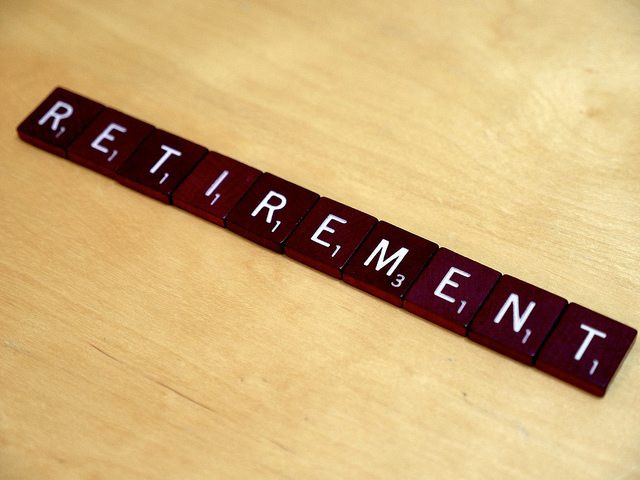How to Approach Retirement as a Small Business Owner. By: Flavio J. “Joe” Carreno

Running your own business has numerous advantages, including the ability to determine your work schedule and the possibility of raising your income. However, without the benefits usually provided by large employers, saving for retirement is often left up to you.
When you operate a small business, nearly every aspect of it becomes entangled with your personal life. You are your company, and your company is you, says David Burton, a Harness Wealth’s tax consultant.
Having a retirement plan in place and putting money aside early helps guarantees you will have a stable financial cushion when retirement comes.
Let’s look at four tips that’ll help you prepare for your retirement as a small business owner.
-
Determine your retirement needs
It’s critical to calculate how much money you’ll need to live a comfortable retirement.
Consider your desired retirement age, estimated living costs, and other relevant considerations such as taxes, inflation, and Social Security benefits.
Make sure to account for various possible scenarios, such as selling the firm or ceasing to generate business-related income.
Financial tools, like a retirement calculator, can help you assess your needs. You might also seek the advice of a financial professional who specializes in retirement planning.
In any case, knowing how much money you’ll need early on will help you decide on the best retirement approach to fulfill your financial goals.
-
Develop an exit plan
You’ll have to decide what to do with your business once you retire. That means having an exit strategy.
The exit plan might be transferring ownership control to someone else, selling the business, or conducting an initial public offering. When deciding about an exit strategy, consider how long you want to remain a part of the business. Also, consider the best way to protect your business assets, and your financial situation and ambitions.
Many business owners don’t always consider their exit strategy or retirement plan regarding their business. According to Kristen Carlisle, Betterment 401(k)’s general manager, it’s never too early to start thinking about it.
In many situations, your business company plan and pitch should include an exit strategy.
-
Figure out the best retirement savings plan for you
Once you’ve determined your retirement needs and an exit strategy for your business, it’s time to figure out which retirement savings plan is best for you.
Consider the contribution restrictions of the plans, the number of employees you have, and the tax benefits associated with the kind of account you choose.
No matter at what point in your business planning path you’re currently, it’s essential to consider building a retirement plan for yourself. If you have employees, it’s also a good idea to provide them with a retirement benefit to feel financially secure and prepared, Carlisle stated.
The following are the five types of the most popular self-employed retirement plans:
Traditional or Roth IRA
- An IRA, either traditional or Roth, is a tax-advantaged retirement savings account. With a traditional IRA, you only pay taxes on your money when you withdraw it in retirement. Because taxes are deferred, your investment profits may rise faster. Traditional IRAs can be either deductible or not. A non-deductible IRA doesn’t allow you to deduct your contributions on your tax return, whereas a deductible IRA allows that. A Roth IRA requires you to pay taxes on the money you contribute upfront, enabling your money to grow tax-free, and you pay no taxes when you retire. You or your employees can create and fund their own IRAs. 401(k)s from a former job could also be rolled over into an IRA.
SEP (Simplified Employee Pension)
- A SEP IRA is a tax-deductible account for self-employed persons or small business owners, including freelancers. SEPs work similarly to traditional IRAs in that contributions aren’t taxed until withdrawn. This sort of account, which an employer or a self-employed individual may set up, allows the employer to contribute to their employees’ accounts. They provide a more significant contribution maximum, on top of traditional or Roth IRA contributions.
SIMPLE IRA (Savings Investment Match Plan for Employees)
- Another form of tax-deductible account for self-employed persons or small business owners is a SIMPLE IRA. As opposed to SEP IRAs, employees and not only employers, can contribute to it. SIMPLE IRAs additionally require the employer to make a dollar-for-dollar match of up to 3% of an employee’s salary or a flat 2% of pay, regardless of whether the employee contributes or not.
Solo or Individual 401(k)
- A solo 401(k) is an individual 401(k) for a self-employed individual or small business owner who doesn’t have any employees. Solo 401(k)s operate similarly to traditional 401(k) plans offered by larger corporations and organizations. They, like IRAs, are available in both traditional and Roth forms. Contributions can be divided equally between the two.
Defined benefit
- A defined benefit plan, like a pension, is a form of retirement account that the employer sponsors. When you retire, your employer determines a fixed compensation depending on criteria such as your income and time spent at the firm. When retiring, you can choose between a lump-sum payout or a monthly “annuity” payment.
-
Prioritize retirement planning
It’s all so easy to get caught up in the day-to-day activities of running a small business. But no matter what, Carlisle said, don’t make the mistake of ignoring retirement benefits for yourself or your employees.
Make sure that you’re thinking for your future and the future of your staff, regardless of the size of your business, she said. It doesn’t have to be a big start; you may start small and grow from there, as long as you don’t overlook the benefit.







